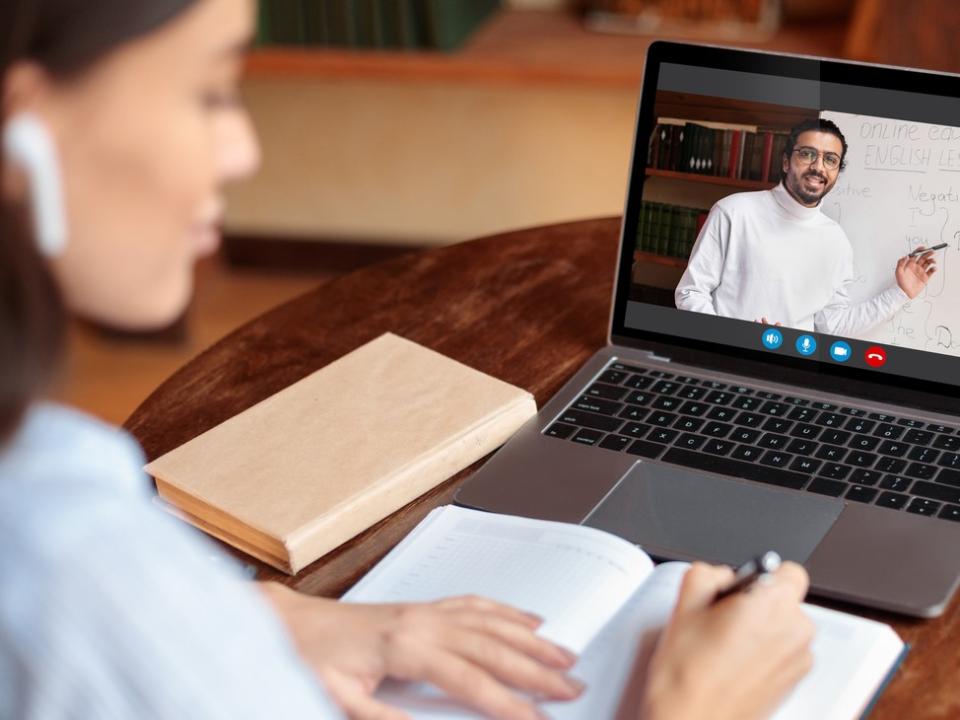The importance of teacher presence and synchronous activity to promote student engagement has been extensively researched and discussed. Yet there remains a lack of discourse about effective pedagogical approaches in asynchronous activities to enhance students’ interest and attentiveness to learning.
Many factors affect student attendance and engagement in class and not all of them can be controlled by the educator. Some students may not feel comfortable engaging with synchronous activities or cannot attend live lectures for reasons that are beyond the scope of this article. However, educators can engage students in active learning and meaningful experiences through effective asynchronous activities. This enables students to build competence and work through the learning activities at a time, place and pace of their choosing.
This article explores how to implement effective asynchronous activities to foster student engagement.
Student engagement has three interrelated dimensions: behavioural, emotional and cognitive, as identified by Jennifer Fredricks, Phyllis Blumenfeld and Alison Paris in the 2004 paper “ School engagement: potential of the concept, state of the evidence”.
Behavioural engagement is related to participation and involvement in learning activities.
Emotional engagement encompasses students’ attitudes, reactions and sense of belonging.
Cognitive engagement is related to developing self-regulated and autonomous learning strategies.
To help students foster these interrelated dimensions of engagement through asynchronous activities, it is best to provide clear guidance about:
- the purpose of activities and their learning outcomes
- instructions about participation
- students’ responsibility for their learning
- supportive teacher-student relationship
- pedagogical approaches to promote deep learning
- authentic and alternative activities that allow for critical and creative thinking.
The types of asynchronous activities set are a determining factor in contributing to student engagement. They can enable student interaction with digital content through online learning management systems (LMS), self-paced individual exercises, group activities such as discussions, and project work. Below are five recommended types of asynchronous learning activities and how, if implemented well, they can support students self-directed learning through behavioural, emotional and cognitive engagement.
- Resource collection: Enhance student engagement
- Instructional design advice: how to translate your academic knowledge into an effective online course
- Easy as ABC: design an online course in 90 minutes
Reading and writing
Provide clear instructions and timely feedback to boost students’ willingness to invest their time and attention participating in activities. It helps students comply with “rules”, experience a sense of belonging and demonstrate positive reactions to activities and classmates.
Compile a group reading list and assign one title to each week. Encourage students to share their favourite resources or discuss the main themes using collaborative tools such as Diigo or Perusall. Diigo provides a collaborative research and learning tool that allows students to pool and organise resources through group bookmarks, highlights and sticky notes. Perusall is a free social reading platform that allows students to annotate readings and videos collectively and provide feedback on each other’s comments.
Tasks could include asking students to summarise sections, or highlight key messages, in the text and share them, annotate the article or highlight the parts they find interesting or confusing and initiate discussions about them.
You could ask students to write an essay or a report in collaboration with classmates on a shared whiteboard in Google Docs, Teams group or Google Slides. As instructor, you should oversee their progress and engage in their discussions. These tools allow students to work asynchronously on a shared resource, write a group essay or report and use comments and track changes. If this is part of their assessment task, you can provide feedback before the final submission.
Watching videos
Recorded lectures and other instructional videos should be presented as short chunks, with activities in between each one. Self-directed learning can be encouraged via these asynchronous activities in which students can be asked to process, reflect on, practise or respond to the content discussed in the videos.
When producing videos, provide a brief introduction to the session’s main goals and learning outcomes. Explain what students will learn, then recap important or confusing points from the previous session, before starting the main discussion. This helps set students up to complete the interactive exercises or activities designed to reinforce their understanding. Use tools such as H5P to create short quizzes or polls that provide immediate automated feedback. This feedback is an opportunity to share additional information or resources for students to review and build understanding at their own pace.
Walk students through real-life scenarios, case studies or challenges, then ask them to respond to online questions. You can ask students to reflect on what they have learned from the video and pose outstanding questions in the online forums.
Empower students by giving them choice and voice in their learning process. For example, ask them to create their own videos using smartphones or tablets about the topic in response to the questions or challenges highlighted by others in the class.
Podcasts and interviews
Interacting with industry experts or peers can encourage students to take ownership for their learning. Podcasts are just one way to do this. Record an interview with a leading expert or practitioner or with students to provide different viewpoints or industry insights.
Or ask the students to conduct their own interviews with a peer or industry expert about the main themes of a particular topic, using tools such as Audacity or SoundCloud, then share a link where other students can comment on the recordings in the discussion space.
Online discussions
Online discussion is a vital component of participatory, peer-to-peer learning. Introduce a topic in a forum on your LMS or preferred platform and ask students to brainstorm ideas and share responses – these can be visual and design led as well as written. Ask students to take turns summarising reading, podcasts or lecture recordings as a group and posting them to a forum to spark further discussion. As instructor, engage in the discussion, provide feedback or answer common questions that emerge.
Group work
Introduce group projects that encourage students to reflect on their own learning and thought processes. Integrate opportunities for knowledge testing and reflection, so students can assess their understanding, review the material and access additional resources if required.
Organise students into groups and ask them to create an e-portfolio where they work collaboratively through a set of problems and receive peer feedback on their proposed solutions or answers. The instructor could then share any alternative solutions. You can encourage students to use Folio, a digital space in Canvas, where the students can curate projects and share them with other users.
Hasti Abbasi is a senior educational development adviser in education services at La Trobe University.
If you found this interesting and want advice and insight from academics and university staff delivered direct to your inbox each week, sign up for the THE Campus newsletter.




comment